However this all plays out, 2023 will almost certainly be regarded as a pivotal year for AR and VR. After years of waiting for the category to have its iPhone moment, Apple finally unveiled the Vision Pro during WWDC back in June. It was everything we’ve come to expect from the company: big, boisterous and polished, with lofty promises and a price tag to match.
Having spoken to most of the major vendors over the past year, it seemed like everyone relished the arrival of the 500-pound gorilla. They would, they reckoned, be ships among a rising tide. Even more to the point, perhaps, Apple’s entry would be a sort of validation of years — or even decades — of work.
Certainly the forthcoming Vision Pro has amped up both the attention and the pressure the competition is facing. I would venture a guess that Magic Leap received more press coverage in Apple’s wake than it had since the days it was a mysterious white-hot early-stage startup. I also assume that more people than ever were following Meta’s recent Connect event to see how the company would respond.
Of course, road maps don’t work that way. The Meta Quest was unquestionably in the works well before the Vision Pro was made official. With that in mind, you can’t point to anything specific about the new hardware that is a direct response to Apple. The flip side of that, however, is that Meta has been in this business for some time now. March marks a decade since the company acquired Oculus. Since then, it’s had to blaze its own path.
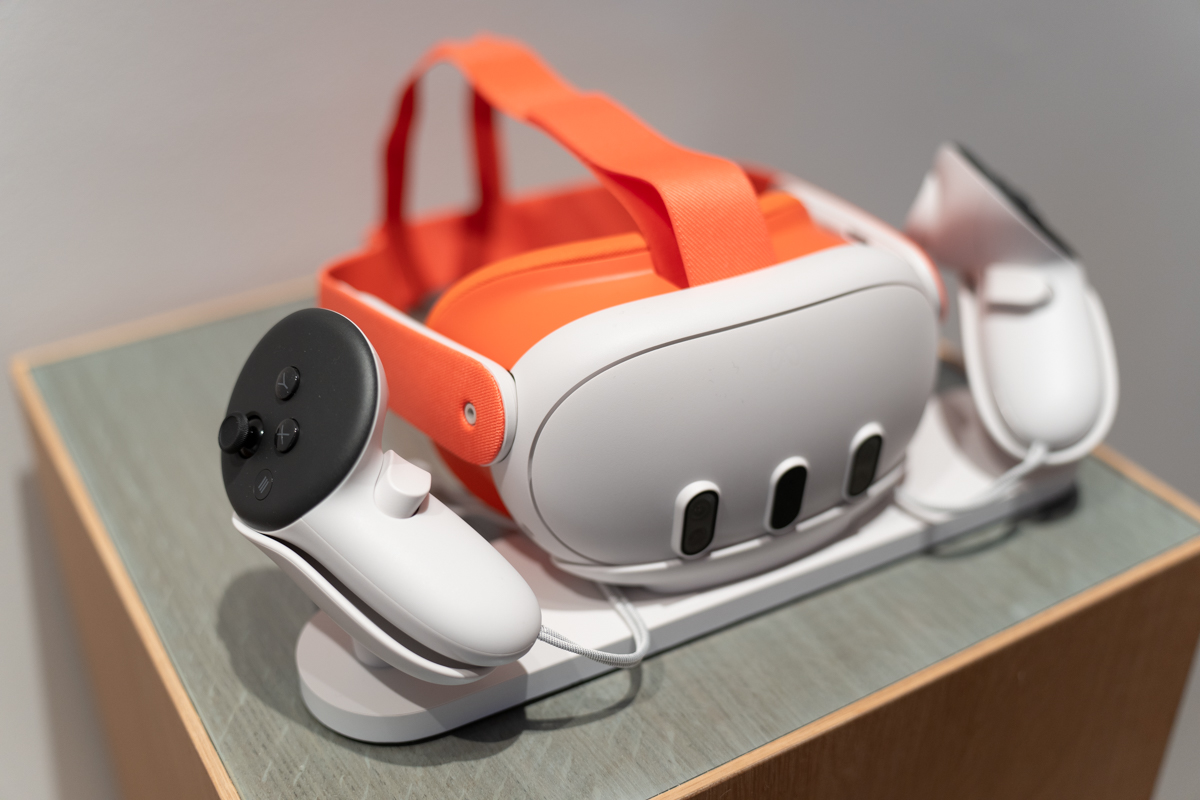
At this juncture in time, Meta and Apple have arrived on two different sides of the spectrum. While both are effectively mixed reality hardware, there’s a ton of daylight between price points. Surprising many analysts, Apple priced the Vision Pro above even the Magic Leap 2 at $3,500. The Meta Quest 3, on the other hand, is $3,000 less. In other words, Apple’s offering is 6x the price of Meta’s.
While I don’t think anyone is going to credibly argue that the Quest 3 comes anywhere near the Vision Pro in terms of hardware, that’s an extremely stark difference. It’s also one that highlights the wide distinction in terms of audience. Mark Zuckerberg didn’t have to mention the competition by name when he referred to the Quest 3 as, “the first mainstream headset with high-res color mixed reality.”
(Zuck took an even stronger and more direct stance shortly after the Vision Pro’s unveil, stating, “By contrast, every demo that [Apple] showed was a person sitting on a couch by themself. I mean, that could be the vision of the future of computing, but like, it’s not the one that I want.”

There’s no hard and fast definition for what constitutes “mainstream,” of course, but point taken. I would argue that $500 is still too high a price point to call the system truly mainstream (the mind boggles at how many of these things the company would sell at $200 a pop), but that’s a far more reasonable request for a vast majority of potential buyers.
Perceived markets also play an outsized role in all of these. Along with acknowledging how difficult content is, Magic Leap’s pivot toward enterprise is a direct result of the hardware’s asking price. There likely isn’t a deep pool of customers willing to pay $3,500 to play casual games on an AR headset. But if you’re able to convince businesses that they’ll be saving a lot of money on training, they will take a good, long look at your offering.
That’s not to say that Meta isn’t also embracing the enterprise. Last year it announced the Quest Pro, at double the price of the Quest 3. While I would argue that the new headset makes the pro version largely superfluous for the vast majority of users, Meta Quest for Business reaffirms its commitment to the category. But the Quest 3 is still very much an entertainment-first device.
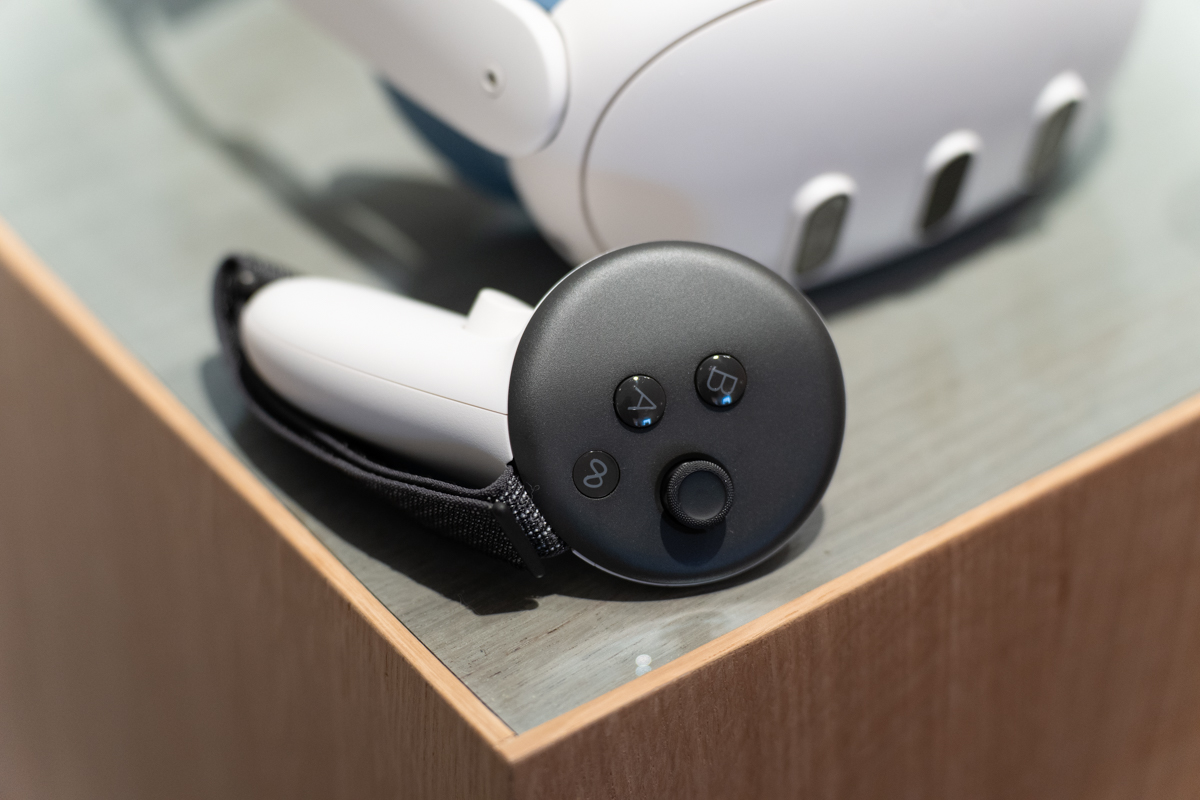
While Magic Leap sees no immediate potential in gaming, Apple took pains to highlight entertainment at WWDC. For Meta, gaming is very much the device’s lifeblood. The Meta Quest keynote was very much a reinforcement of this fact, as new titles took up the lion’s share of stage time, with only a passing mention given to Quest for Business.
Much like your definition of “mainstream,” Meta’s success is relative. The company maintains the top spot in terms of market share. Looking at some numbers released by IDC, the company owned 84.6% of the AR/VR market in Q2 2022. The company’s 50.2% market share in Q2 2023 belies the situation somewhat. The radical drop is due to the PSVR 2’s entry onto the scene. IDC went from not acknowledging Sony to putting it in the No. 2 spot at 27.2%
By the time the new PlayStation headset arrived, the Meta Quest 2 was quite long in the tooth. I would anticipate the Quest 3’s arrival seeing Meta taking an even larger slice of the pie to close out 2023. Keep in mind, we’re not talking smartphone numbers here. The analyst firm puts combined shipments at 8.5 million for the year. That’s a modest increase over 2017. It does, however, see a strong growth for 2024, and by 2027, it anticipates north of 30 million headsets.
Even that modest forecast pales in comparison to other consumer electronics. In 2022, Nintendo sold 5.8 million Switches. It was an impressive showing for a five-year-old console and a drop-off from the past two years, when it was selling like hotcakes during the pandemic. In May, the Switch passed 125 million units sold during its lifetime.

Meta’s successes with the Quest 3 have been modest — but they’re the least modest among their peers. Big fish, small pond, especially when you consider that HTC, the maker of its closest hardware analogue, commanded 2% of the total market in Q3. Meta has been successful relative to the market — and even more to the point, the company has way too much invested in the Quest’s success to consider pulling the rip cord.
That doesn’t preclude evolving, of course. Zuck avoided using the word “metaverse” for the first 34 minutes of his keynote presentation. That doesn’t mean the project has been abandoned, but let’s just say it may not have legs — figuratively speaking, of course.
I’ve been using the Meta Quest 3 for several days now, but I feel it important to mention two big caveats: First, I haven’t tried the Vision Pro yet, so I can’t compare them directly (though I have spent time with the Quest Pro and the latest offerings from Magic Leap, HTC and Sony). Second, I’m injured at the moment, so I haven’t spent time with the system’s myriad fitness apps.
That said, I’ve been enjoying my time with the product so far. Having lived with the system for a bit, I will say that I’m the closest I’ve come to pulling the trigger on a headset. I might have said the same for the Quest Pro, were it not $1,000. I don’t think Meta has nailed the price point exactly, but I suspect a $3,500 Vision Pro will make the idea of a $500 headset far easier to swallow.
The Quest Pro and Quest 3 are both being positioned as XR — or mixed reality — devices, owing to the addition of passthrough technology. For the unfamiliar, passthrough is a method that allows headsets to offer a version of AR, in spite of sporting opaque visors in order to maintain VR functionality (Magic Leap, by contrast, is true AR). The system uses on-board cameras to create an image of the environment onto which it overlays graphics.
Passthrough has been getting better year by year, but no one wearing the headset is going to be fooled into believing it’s transparent. Passthrough is darker and lower res than reality. There’s a bit of latency and the image can appear warped at times. Your eyes and brain adjust fairly quickly however, and the effect is a big improvement over standalone VR. It’s significantly better for situational awareness, while the on-board depth sensors do a good job identifying landmarks and obstacles for the graphics to mingle among.
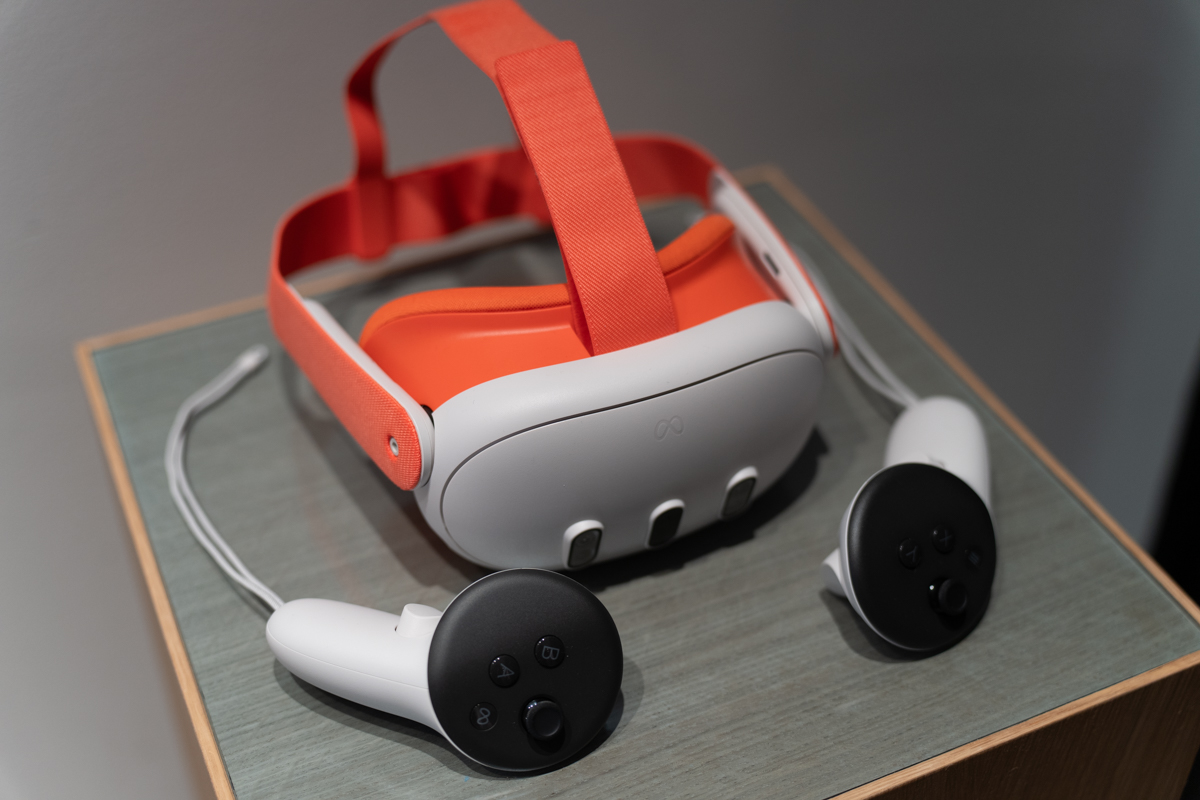
First Encounter provides a compelling picture of how developers can integrate games into AR surroundings. In the game you’re outfitted with a pair of guns to blast fuzzy Koosh ball aliens. The weapons can also blast away at the real walls around you, opening up more of the brightly colored environs. It’s a fun game for a few minutes at a time. Think of it as an immersive casual mobile game. That speaks to a potential issue with the Meta Quest as a platform. It’s often at its best in fits and starts. If you’re looking for serious gaming in a headset form factor, take a good, long look at what Sony is offering with the latest PSVR.
That’s not to say that there aren’t longer titles, of course. After all, the headset is shipping with a free copy of Asgard’s Wrath 2. But the content, the hardware and the off-device processing are in a different league with the PlayStation headset.
It’s not a comfort thing, either. In fact, the PSVR 2 keeps you tethered. The Quest 3, on the other hand, is quite portable. At 515 grams, it’s a bit lighter than the PSVR 2 (560 grams) and significantly less than the Quest Pro (722 grams). It’s just a hair heavier than the Quest 2’s 503 grams — though the new strap system makes it quite a bit more comfortable. The battery is in the front for better weight distribution and the overall size has been slimmed down.
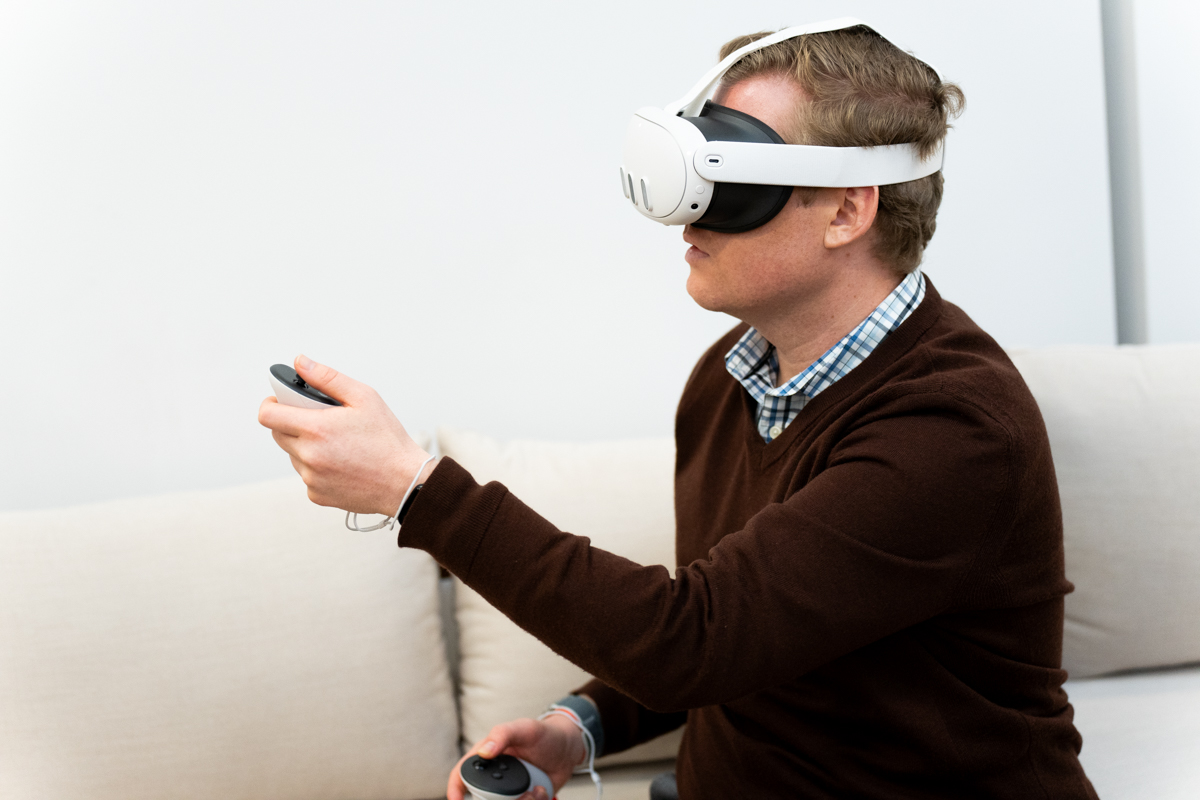
Rated at 2.5 hours, the battery life is roughly on-par with the Quest 2 (app dependent, of course). I don’t think most users will have comfort issues wearing it for as long as the battery lasts — though your mileage will vary with strenuous exercise.
Meta greatly increased its resolution game between the Quest 2 and 3, from 1832 x 1920 per eye to 2065 x 2208. It’s a considerable improvement, especially when taking advantage of the 50 or so titles that have been/will be remastered for the new device. The controllers, meanwhile, have been streamlined, dropping the ring design found on the Quest 2. They’re quite comfortable in hand and don’t have much of a learning curve to get up and running.
The system is decent on the hand-tracking front, as well. You can do a lot with just your hands, but when you’re gaming, it’s a good idea to pick up the controllers if you have them handy. I’ve always been interested in the potential of VR for mindfulness and a borderline psychedelic effect, though if you attempt to use most games in a dim room (to fully eliminate light bleed around the nose), you’ll get an error telling you it’s too dark for tracking. Maybe I’m the only person in the world who cares about this. Who knows?
The Quest 3 is backward compatible with the Quest 2’s content catalog, meaning you’ve got more than 500+ apps at your disposal. Soon that list will include 50 remastered titles and 50 more designed specifically for the Quest 3, including big-name franchises like Ghostbusters, Stranger Things and Assassin’s Creed. There’s a wide range of quality to be found in amongst the Meta Quest store, but that’s to be expected.
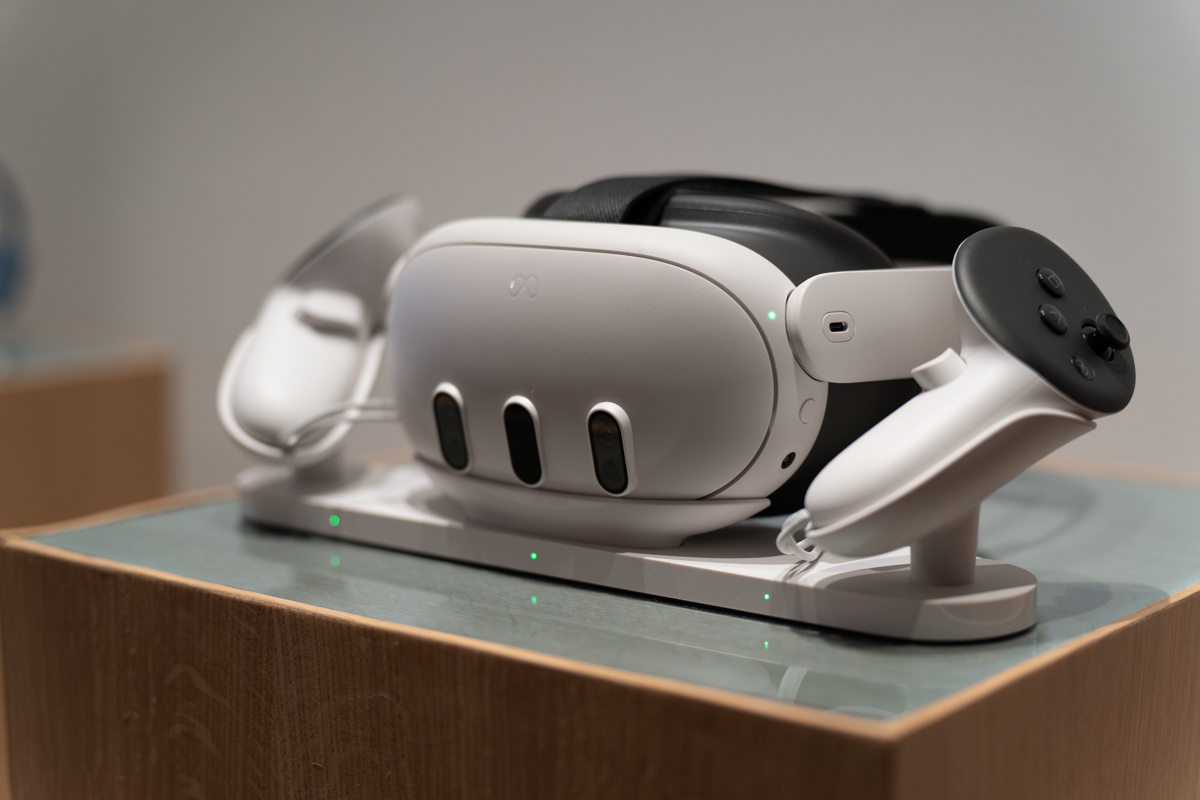
What’s more important is how the form factor is lending to innovation of new gameplay and apps. The ultimate success of VR and AR is still very much up in the air, but there’s no question that it’s an exciting platform with endless potential for new experiences to explore, from fast-paced shooting titles to meditation.
If you’ve been waiting for a good excuse to pull the trigger on a VR headset, the Quest 3 presents a compelling case. It’s tough to say when a more accessible headset will come along. There’s a pretty good chance we won’t see one until the Quest 4 arrives a few years from now.
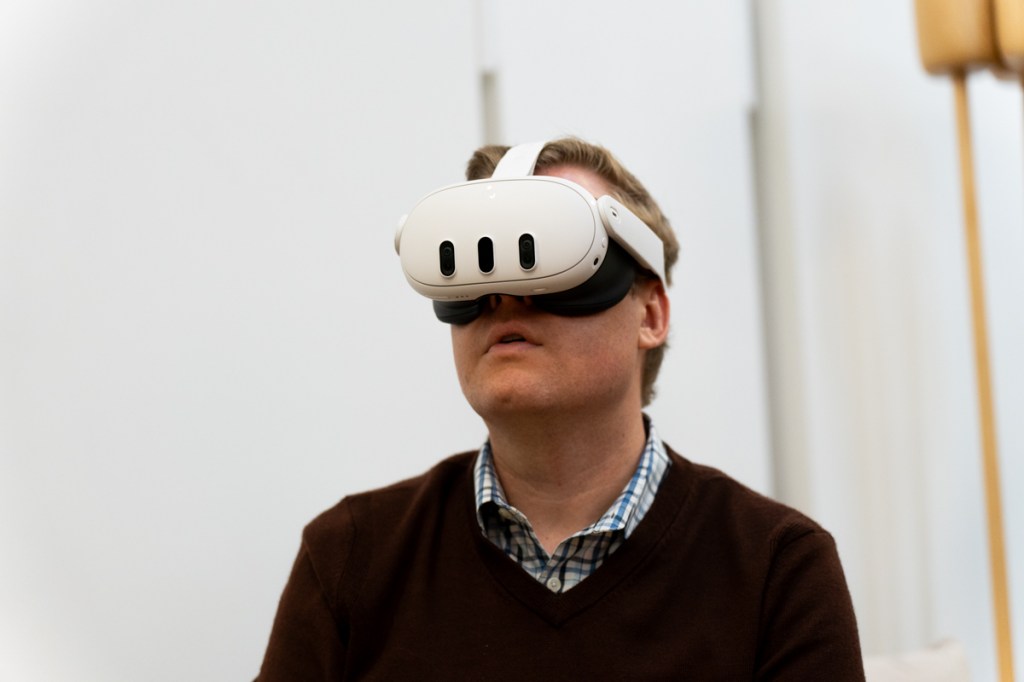






























Comment